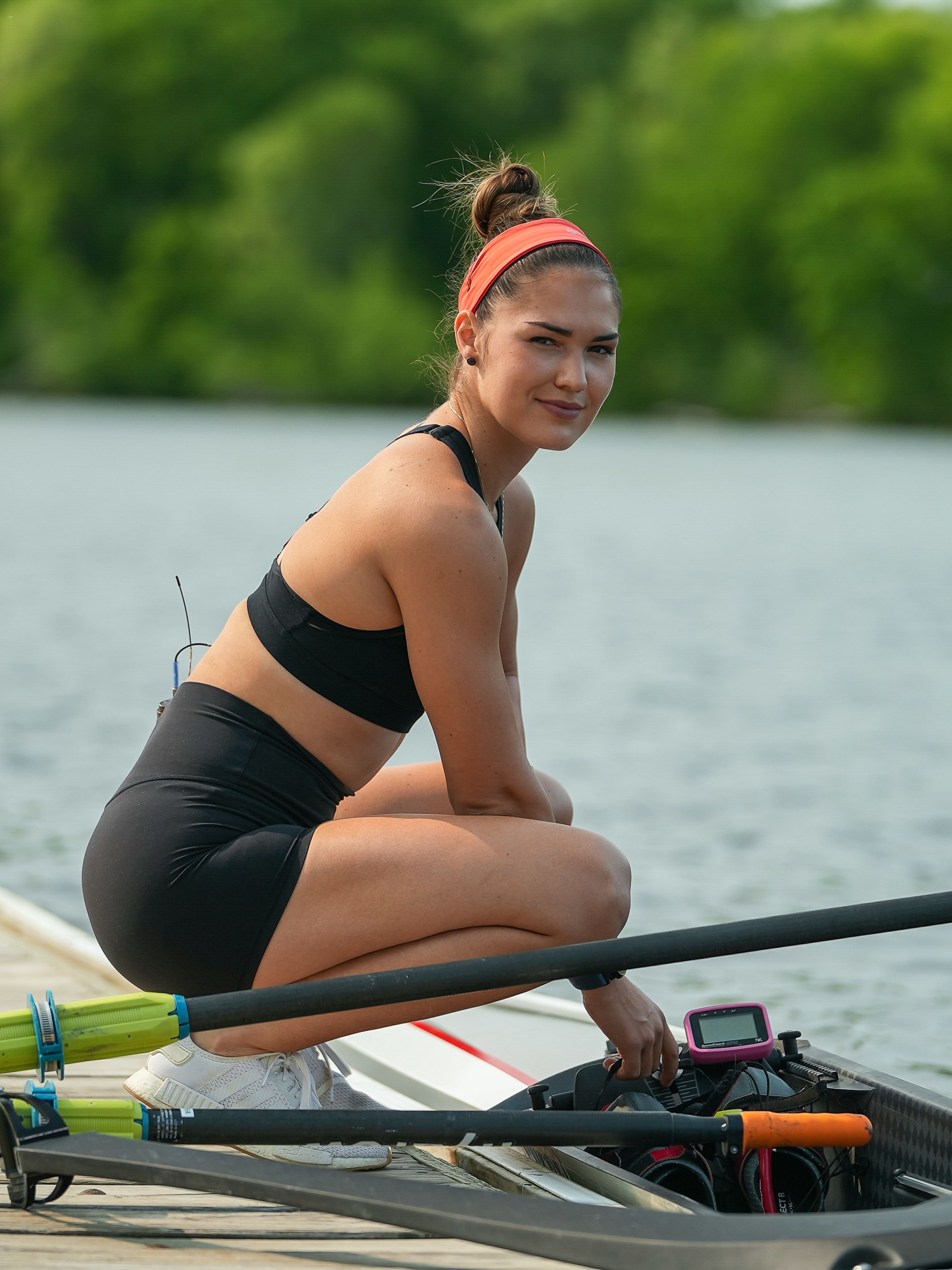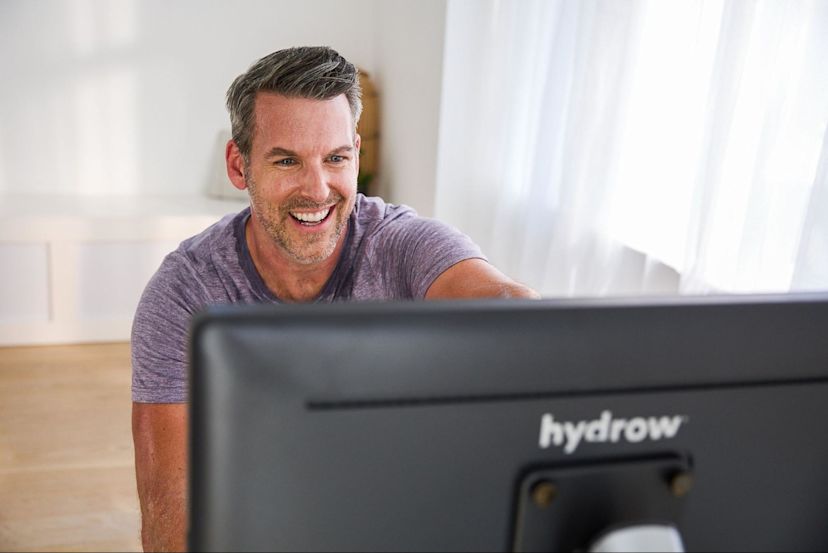How Does Rowing Change Your Body?
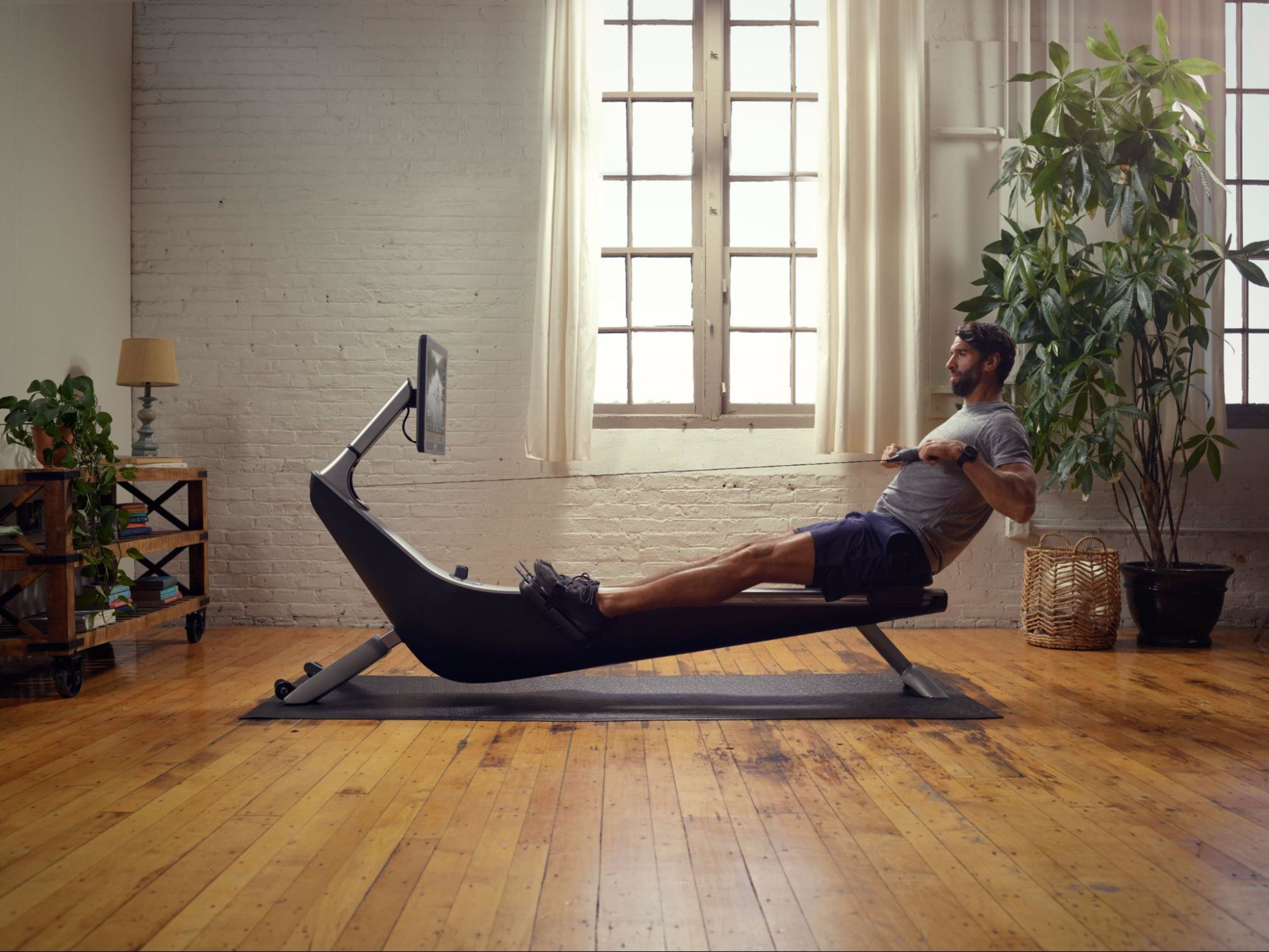
If you’re looking to get into a fitness routine or change up your go-to workout, you’ve probably heard some buzz about rowing. It’s true—rowing is great for your body! It’s a time-efficient, low-impact, and full-body workout that offers both strength and aerobic benefits, meaning it will give you both stronger lungs and a stronger body.
You exercise because you want to be healthy and live your best life, but let’s be honest—it would be nice to also see some new muscles from your hard work, right? We get it! Rowing can change your body for the better, with a regular rowing routine helping to improve your overall health and the composition of your upper-body and lower-body muscles.
In this blog, we’ll cover all the ways rowing can change your body, including:
Let's dig in!
Key takeaways:
Rowing offers a low-impact, full-body workout that effectively combines fat-burning endurance with muscle-strengthening benefits by engaging 86 % of your muscles, particularly targeting legs, glutes, core, back, and arms.
Consistent rowing leads to visible improvements in muscle tone, posture, and cardiovascular health, with typical progress seen in energy and mood in 1–2 weeks, muscle tone and endurance in 3–4 weeks, and significant definition and stamina gains by 6–8+ weeks.
It's time-efficient and accessible—rowing builds VO₂ max, lung capacity, metabolism, mood, heart health, and bone density, making it suitable even for those with joint concerns, and results can be tailored by adjusting workout intensity and duration.
How does a rowing machine change your body?
First things first, it’s important to note that rowing—like running or cycling—can be done in different ways to achieve different physical and physiological results.
For example, in the same way that a 100-meter sprinter and a marathon runner have different body types, someone who only does high-intensity interval training (HIIT) rowing workouts will have physical differences than someone who does 60 minutes of endurance rowing every day.
That’s because there are two distinct ways our bodies change in response to exercise:
Fat loss: This is achieved through long, low-intensity workouts that trigger your body to draw from its fat stores.
Muscle gain: This is achieved through short, high-intensity work fueled by our body’s fast-access sugar stores. These workouts cause little tears in our muscles that later trigger muscle repair and growth.
Importantly, there are not very many workouts you could do that would only burn fat or only build muscle. Since rowing is both a strength and endurance sport, it is especially easy to get the benefits of both. Depending on your fitness goals, you can skew your training to focus on longer or shorter rowing workouts to achieve the results you are looking for.
Whether your workout is short or long, with good technique, a rowing machine will always hit the same muscle groups.
Let’s go over the changes you might see to different parts of your body as you incorporate rowing into your fitness routine:
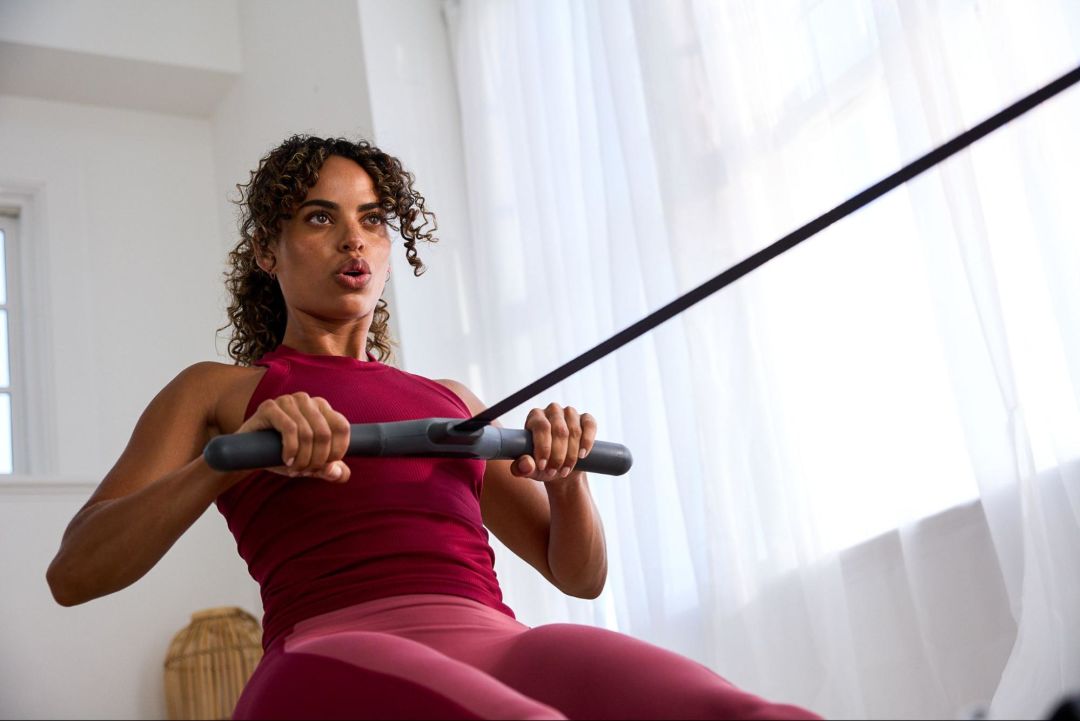
Efficient and Effective
Work 86% of your muscles in just 20 minutes with a Hydrow rowing machine.
How rowing changes your upper body
If you’re looking to target and strengthen your upper-body muscles, rowing consistently can have an impact on your arms and shoulders, lats and back, and core. Learn more about rowing’s effect on these areas of your body below:
1. Arms and shoulders
Rowing is not an arm sport—if you’re looking to get massive biceps, you’d be better served doing some curls. However, it does use your arms and shoulders, and you will still see and feel them working.
Rowing is great for activating your arms and shoulders since they are constantly in motion but aren’t working hard enough to build significant muscle. Some time on the rowing machine will likely give your arms and shoulders a strong, toned effect.
2. Lats and back
Rowing will also build up your back muscles. Good rowing technique means good lat engagement—your lats are those muscles that wrap around your back from your armpits. You might not have paid much attention to them before rowing, but after your first few workouts, you’ll definitely know they exist.
While you might not notice the physical effects of these, your rhomboids (the muscles between your shoulder blades) will also get stronger than they’ve probably ever been, which is great news for your posture!
3. Core
Your core is so important for rowing. You can think of it as the glue that holds your stroke together. With good technique, your abdominal muscles and obliques should be working hard with every stroke to support your posture and protect your lower back.
The rowing machine alone might not give you shredded, six-pack abs, but it will strengthen your core, which will improve your posture and protect you from injury in other parts of your life.
To get the most out of your rowing workouts, supplemental core work is invaluable. A stronger core will give you a stronger stroke, and a stronger stroke will give you a stronger core!
Related blog: Can a Rowing Machine Get You in Shape?
How rowing changes your lower body
Rowing might be a full-body workout, but the true power behind your stroke comes from your legs and glutes. Of all the areas of your body most likely to change from rowing, your legs are No. 1. Every stroke works your glutes, quads, hamstrings, and calves.
With some consistent time on the rowing machine, you’ll almost surely see some newfound lower-body strength and definition.
How rowing changes your overall health
At the highest levels of the sport, rowers are some of the fittest athletes in the world. They have recorded VO2max and lung capacity values nearly 100% larger than that of the average human. If you want it to, rowing has the potential to make you stronger and more aerobically fit than you have ever been, and you don’t need to have Olympic dreams to make it happen.
Rowing is also one of the most time-efficient ways to improve your overall health and fitness. Because it is low-impact, it’s accessible to you even if you suffer from pain while running or cycling, and with good technique, it’s safe to do frequently. With consistent work, you can expect rowing to increase your lung capacity and muscle growth, as well as boost your mood, energy, metabolism, heart health, and bone density.
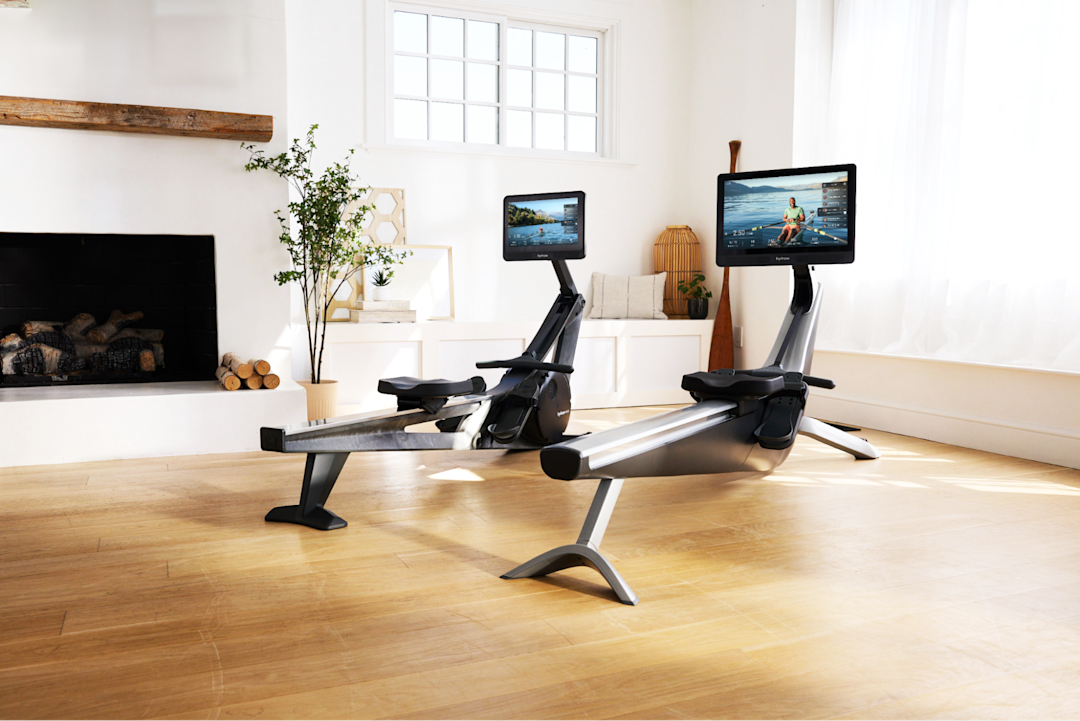
Considering a Hydrow rowing machine? We tackle all your burning questions in our FAQ guide.
As the cherry on top of a healthy body, when you tailor the types of workouts you do to the goals you set for yourself, you can expect to see muscle growth or fat loss in everything from your arms, to your back, core, glutes, and legs. Rowing could be the key to achieving the health and fitness goals you have been working for.
Related blog: Is Rowing Hard?
How long does it take to see rowing machine results?
Seeing and feeling results from using a rowing machine largely depends on various factors, such as your fitness level, workout intensity and duration, and consistency. Here is a general timeline for what you might expect over a period of 12+ weeks:
1–2 weeks: You may start noticing improvements in your energy levels, sleep, and overall mood.
3–4 weeks: Visible physical changes can start to appear, such as increased muscle tone and improved posture. You might also notice better cardiovascular endurance.
6–8 weeks: More significant changes become apparent, such as fat loss, muscle definition, and enhanced stamina.
12+ Weeks: Consistent rowing at moderate to high intensity will lead to long-term improvements in strength, endurance, and body composition.
Consistency is key! Aim for at least 20 to 30 minutes of rowing, three to five times per week, for the best results.
Rowing machine “before and after” stories
If you’re looking for some real-life inspiration, members of the Hydrow community were kind enough to share some of the physical changes they experienced before and after rowing with a Hydrow rowing machine.
After adopting a regular workout routine with his Hydrow, Mazdak Merrikh went from 270 pounds to 225 pounds in just over a year, saying he’s the fittest he’s been in decades.
“I’ve been 225 pounds before and didn’t look like this,” he says. “It’s different. I don’t get too caught up in the scale and my weight stuff, but I’m by far a different person. My clothes fit completely differently. I went from an XXL to a size large. It’s easier to go up and down steps. I’m playing with my kids longer. There are countless things being more in shape makes a difference for in my life.”
For Hydrow member Felice Kapfhamer, the biggest rowing machine results she’s seen have been improvements in her stamina and overall fitness level.
“Beyond [Hydrow’s] milestones and rewards, I am most proud of my health and strength,” she says. “Hydrow has given me confidence in myself and made me realize I can achieve fitness and feel accomplished even at 65. I’m proud of myself for staying committed and seeing continuous growth in my stamina and health.”
Yet another member, Erin Dickinson, shared that using a rowing machine has helped her get serious about her health after avoiding being active due to chronic migraines.
“Hydrow has motivated me to become stronger, cutting my migraine days in half and helping me lose 75 pounds in seven months,” she said. “I didn’t know it was possible to be this strong and am excited to see what the future brings.”
Interested in changing your body with a rowing machine?
If you are looking to incorporate rowing into your fitness routine and invest in an at-home rowing machine, be sure to check out Hydrow. Our state-of-the-art rowing machines are the perfect addition to any home gym, giving you an immersive and total-body workout in just 20 minutes a day.
Hydrow’s extensive library of workout content is led by our team of world-class and Olympic Athletes and filmed in stunning locations around the world. Whether you’re looking to do a rowing workout or cross-train with yoga, Pilates, and circuit training, you’ll be transported to stunning global destinations that keep you motivated to come back again and again.
Learn more about the benefits of a Hydrow rowing machine today!

Explore Hydrow
Learn more about how you can transform your fitness routine with a rowing machine.
